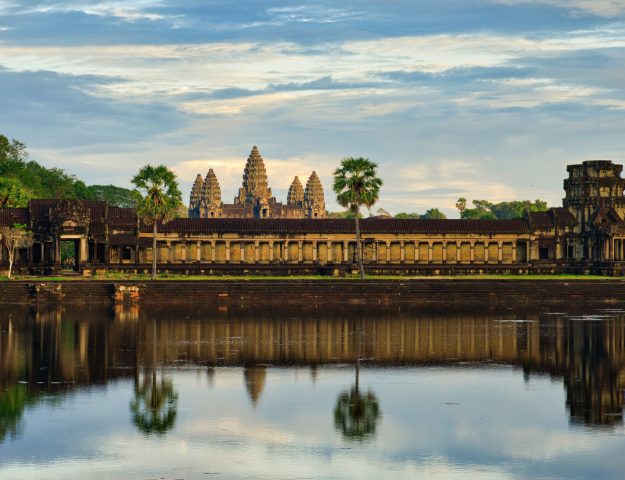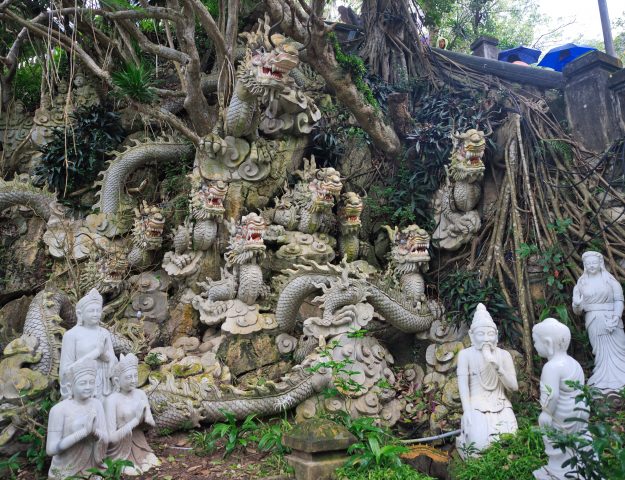We had decided to add three days in Cambodia at the end of our trip to Vietnam as we were flying out of Bangkok. Cambodia lies smack between Vietnam and Thailand. Also we were hoping that tourism would not be back in full force after the pandemic and the many travel restrictions. Well – not all of Cambodia in three days, just a small portion around Siem Reap in the North.

So we booked ourselves for three days into one hotel and had one driver for the entire time there. It was Esthers big dream to once see the temples of Angkor. Which are normally quite overrun with tourists – 6.6 million registered visitors in 2019 to be precise. In December 2021 Cambodia opened its border again and tourists are slowly coming back. But the numbers are still low – so far only 62.000 tickets are being sold monthly according to Angkor enterprise. Do the math and you understand, why many Cambodians are in trouble.

But first Chris had arranged a three hours horseriding tour to one of the temples away from the others. One that was not on the normal tourist routes. We got picked up by a Tuk Tuk at 7 am for an early start to the ride as Cambodia was much hotter than Vietnam.

Forecast was to be mixed weather but 29°C and high humidity. It felt like walking in a hot house at 8 AM. Riding through town in a Tuk Tuk gives you great insight about a country. Cambodia is quite different from Vietnam.


Whereas Vietnam gave us the impression that it´s people were much closer to the Chinese in celebrating Lunar New Year, there were a lot of Taoists, Chinese influenced cuisine and the people had features and lighter skin similar to the Chinese. Here in Cambodia the influence of Thailand can be felt at every corner. Restaurants have often Khmer and Thai food on their menu.

The many golden pagodas, the Thai inspired cuisine, the features an skin of most Cambodians are much darker and looking similar to Thai. Buddhism and Hinduism are wide spread and their Khmer new year gets celebrated around April time frame. Cambodia also gave us the impression that the country is still very much struggling with the aftermath of Covid and the economic impact. Vietnam seemed to be on a fast track to become ‘little China’ as industrious and business like they appeared. Quite capitalist actually. While in Cambodia they still struggle to make ends meet.
Tourist numbers are still very low and many tourists just hop in and out of their one main attraction – the three major temples of Angkor – not spending much time or money in the country. We spoke to drivers, massagists, receptionists and the answer is always the same: we hardly could feed our families during the crisis. We had no work. The government is not giving any assistance and is at the same time very corrupt. And so many just scraped by working on the fields or on construction sites on a very meager salary. Despite the fact that (we felt) that the country is behind Vietnam in it’s development we instantly liked it a lot (more).
As we only had three full days there we decided to start with a slow way to explore on horse back.

There is only one stable in Siem Reap, the closest town to the temples and we heard good things about it. Established in 2002 by a Cambodian who used to live in California it is the only stable of it’s kind and quality in all of Cambodia. The horses were small but well shod, fed and treated. Instead of straw or wood chips, they use rice husks as stall bedding.
For us it was mainly a walking scenic ride and we went on small roads, bumpy tracks through the fields and even through streams.
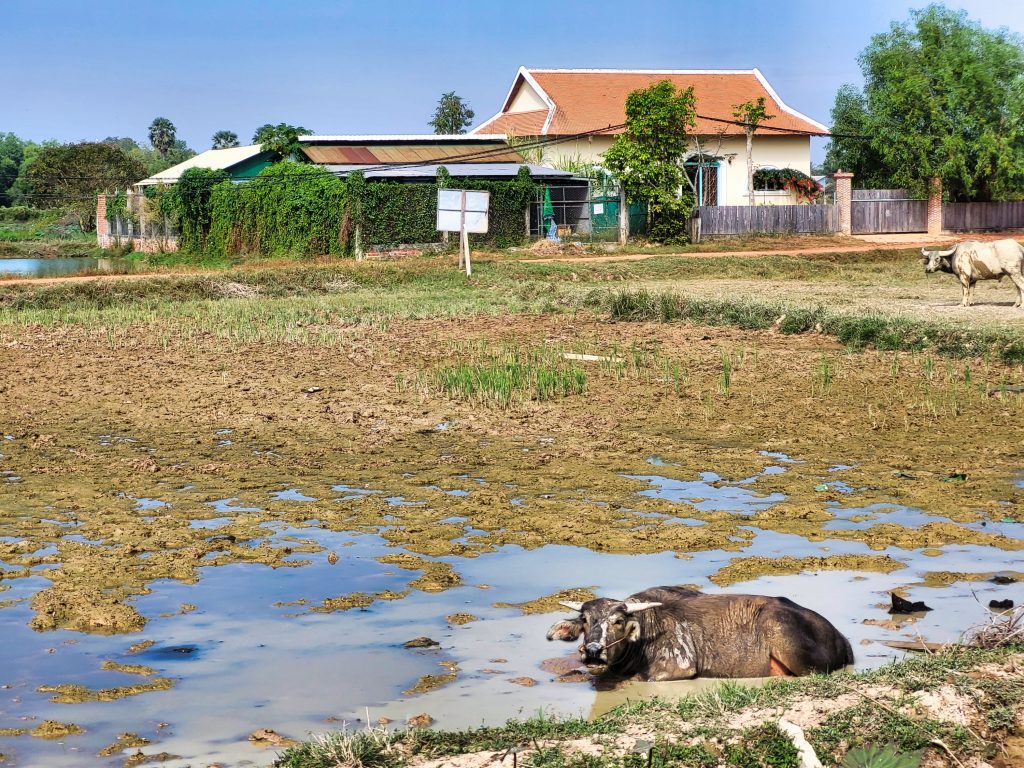
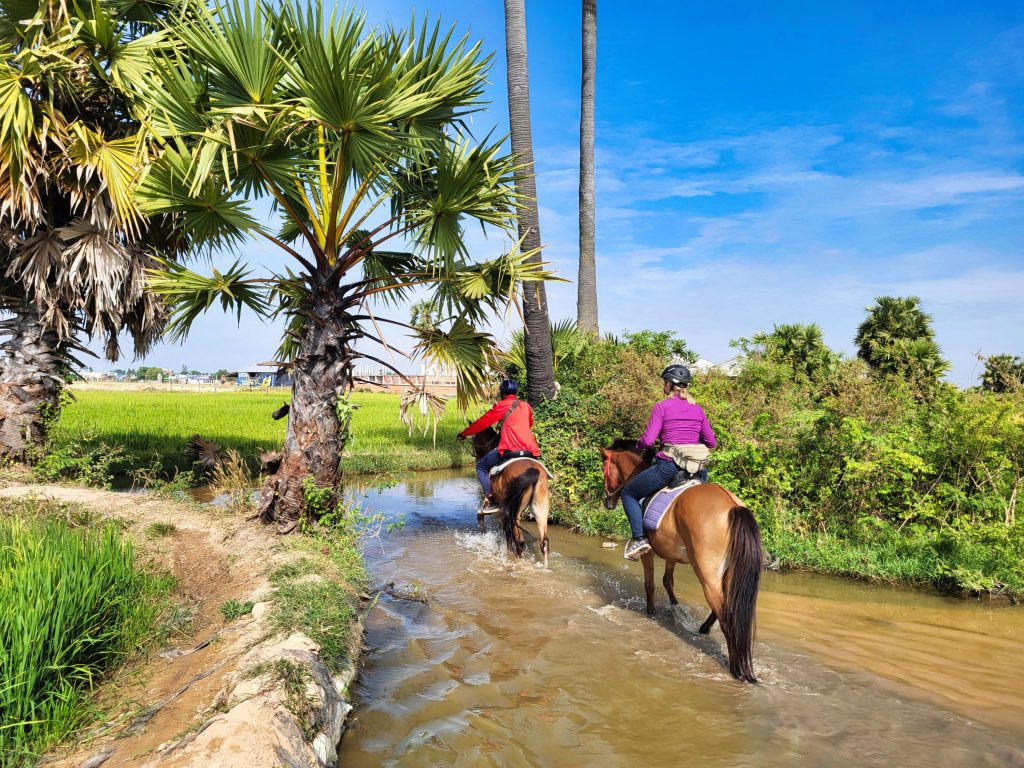
For a change the sun was shining and we could observe early morning life unfold. Stalls selling gasoline in old Whisky, Gin and Batida de Côco bottles (cheaper than at the gas station) for the two-stroke engines, families following their chores.
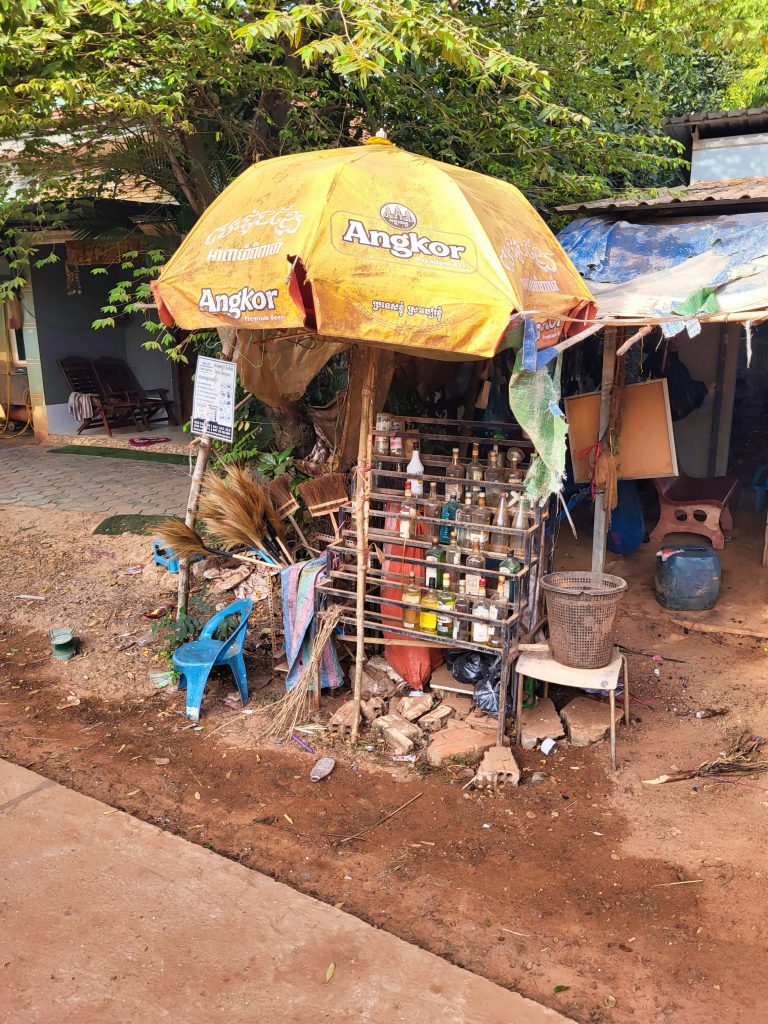
Laundry is paid by the kilo and local specialties are large frogs from the grill.

After about a good hour we arrived at our first ancient temple, Wat Athvear, that still housed an active monastery and pagoda next to it. Obviously the first one is always impressive. We tethered the horses to a nearby tree and started walking towards the ruins. Immediately an officer started to meet us to check our Angkor temple pass.

We had bought a three day ticket online. We were to show that pass at every entrance point from now on and it’s been meticulously checked, even going as far as checking our pass numbers and pictures with the one they had on file and seeing if both match. We were quite surprised, but then crooks are inventive…

We wandered through the ancient small temple which was mostly in rubbles. There is so much still to restore here and not enough money so the bigger temples get priority. It was built in the 12th century and served as a Hindu temple.

We learned that each temple is laid out differently but shares a few elements that always repeat itself in some form or fashion.
Gopuras are the entrance gates to each temple. There could be at least two but as many as four. Some small-ish others very massive and elaborate. Then each temple has one or several terraces often lined with stone balustrades in form of Naga, the snake creature with a multi headed cobra front and pulled by many people, then there are multiple Prasats in each temple.

Prasats are conical shaped buildings with real or fake doors that symbolize a place that is closer to the gods in the sky. Temples often have small prasats around the base and a big central Prasat that is the main element around which all others are grouped in orderly and symmetrical fashion. Some temples are protected by a moat or are pyramid shaped. Pyramids often symbolize Mount Meru, the mountain where some of the gods live, and are hard to climb up as many of them are very steep. When excavating many temples a stone steele was found which often describes the temple and life at the time.
The temples of Angkor were all built between 890 and 1300 and depict the rule and might of the Khmers during that time. More to come later.

We wandered through our first small temple in awe. Not having the exact calculations on static and soundness, every wall and ceiling here seemed oversized. Walls were at least half a meter thick, the ceilings made of huge stone blocks, the windows supported by many small columns and the rooms and corridors are very narrow. Add to that the weathered appearance of a thousand years and you just stand there in amazement.

As our temple was an active monastery, we visited the very nice and small pagoda that stood next to it.



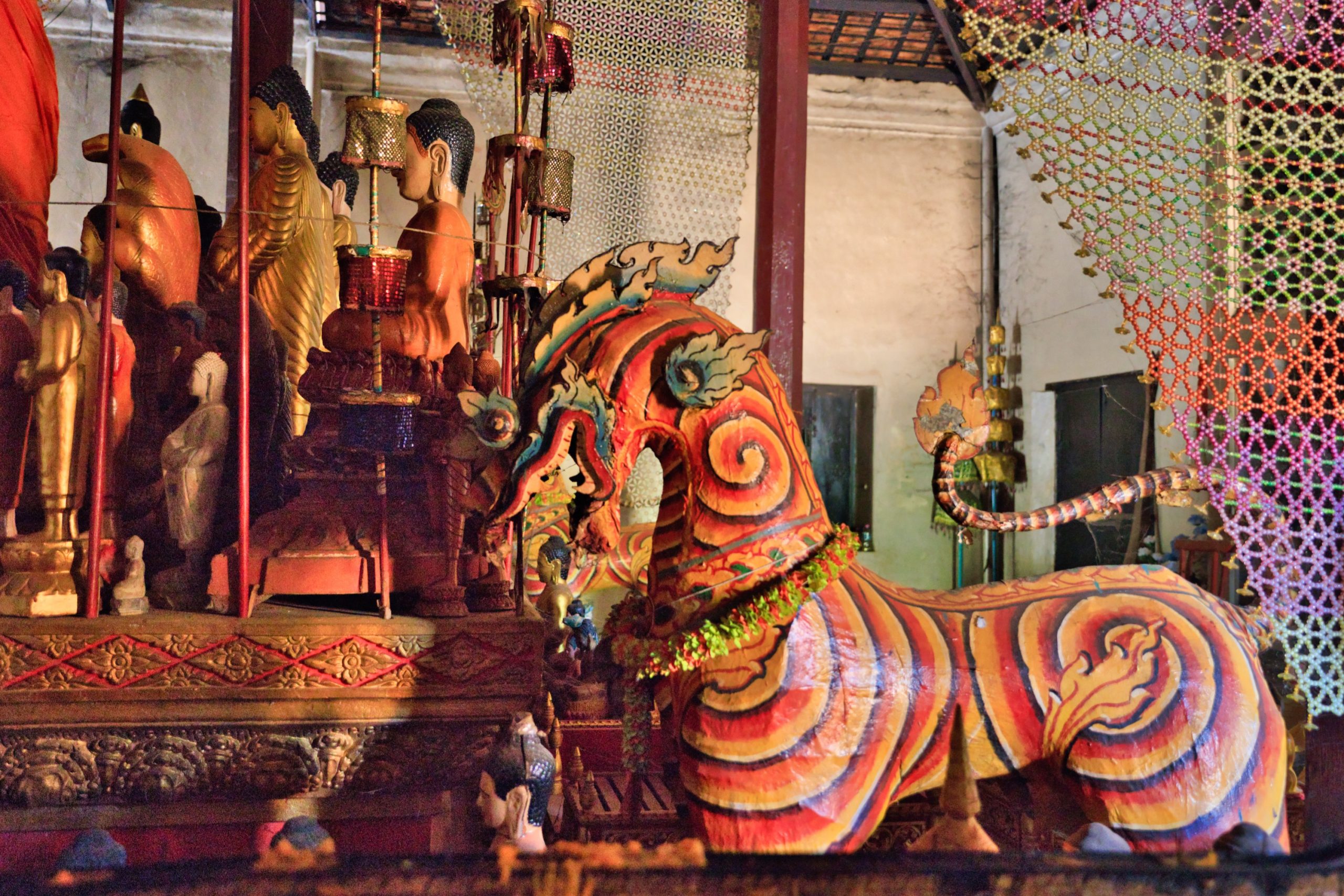


Finally we hopped on our horses again and made our way back to the stable. There is a lot of construction going on, so we are not sure if the ride will still be pleasant in the next years. But it seems, that the stable will be closed soon, since the owner is over 80 and his kids live in the US.
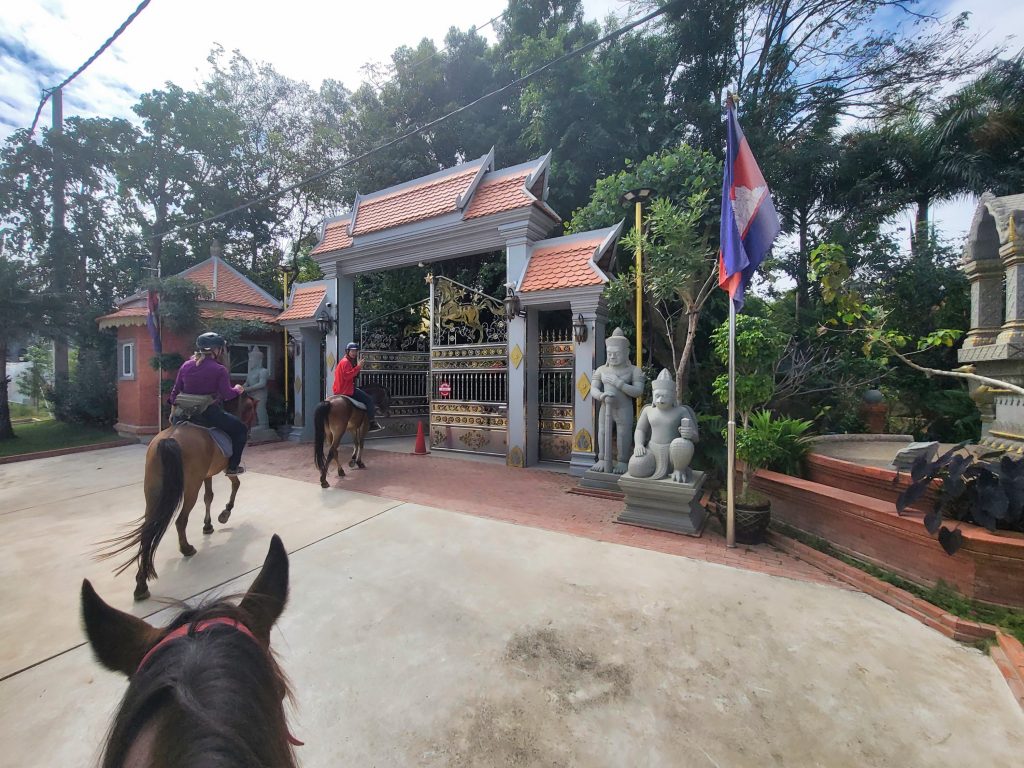
Already we liked Cambodia and in retrospect we should have maybe divided our time more evenly between the two countries.
Siphan, our very helpful driver, picked us up from the horse ranch and we had a yummy and very cheap lunch in a local shop next to the street. By now it was overcast and dark rain clouds seem to gather. We fear the bad weather followed us from Vietnam to Cambodia.

Many one day tours only do Angkor Wat, Angkor Thom and Ta Prohm as the main three temples and be done with it. Avoiding those tours was our goal, so we decided to first visit a few temples off the beaten track. Banteay Srei is also called the ‘citadel of the women’ and lies about 30 minutes north east of the main temple area and is known for it’s delicate and ornate stone carvings.

It’s a small elegant temple. We drove there and luckily there were only very few others, so we could explore at leisure. On every building we saw were lots of dancers engraved called Apsaras.

They differ in hairstyle, gesture and dress. Bantaey Srei had the most and finest we saw in all of Angkor.

We made our way back to the main group by stopping at several lovely and always different temples. Most are partly restored and all except one we saw are cleared of the big trees and jungle greens. One cannot describe in words really how it is to walk through those ruins. Thinking of how much power, life and action they once held. So we will not try to put it into words but let the pictures speak for themselves.


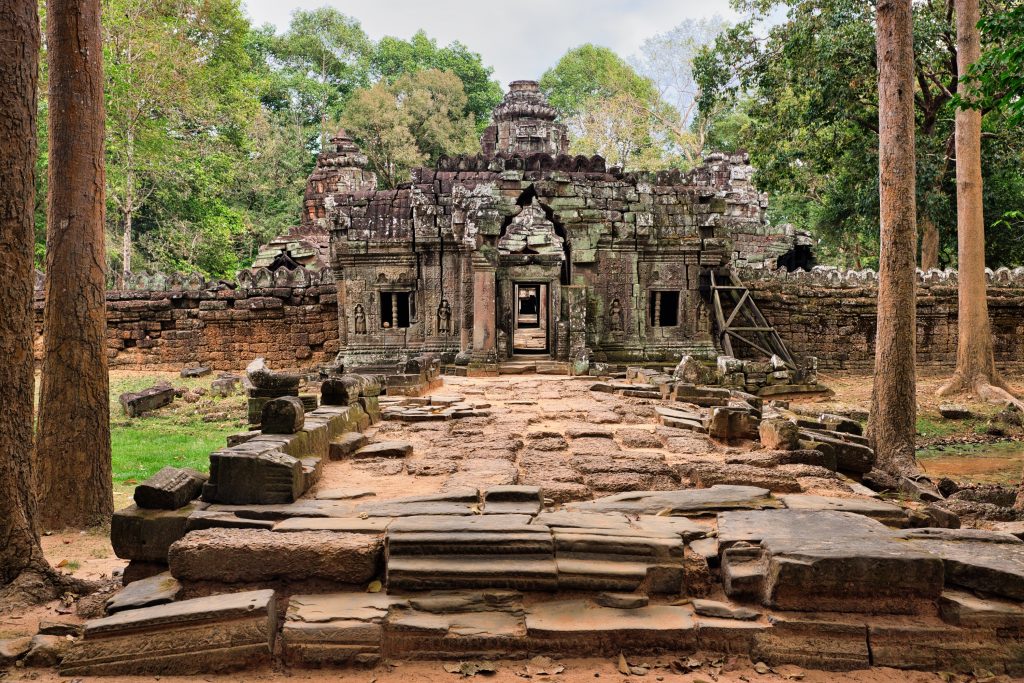









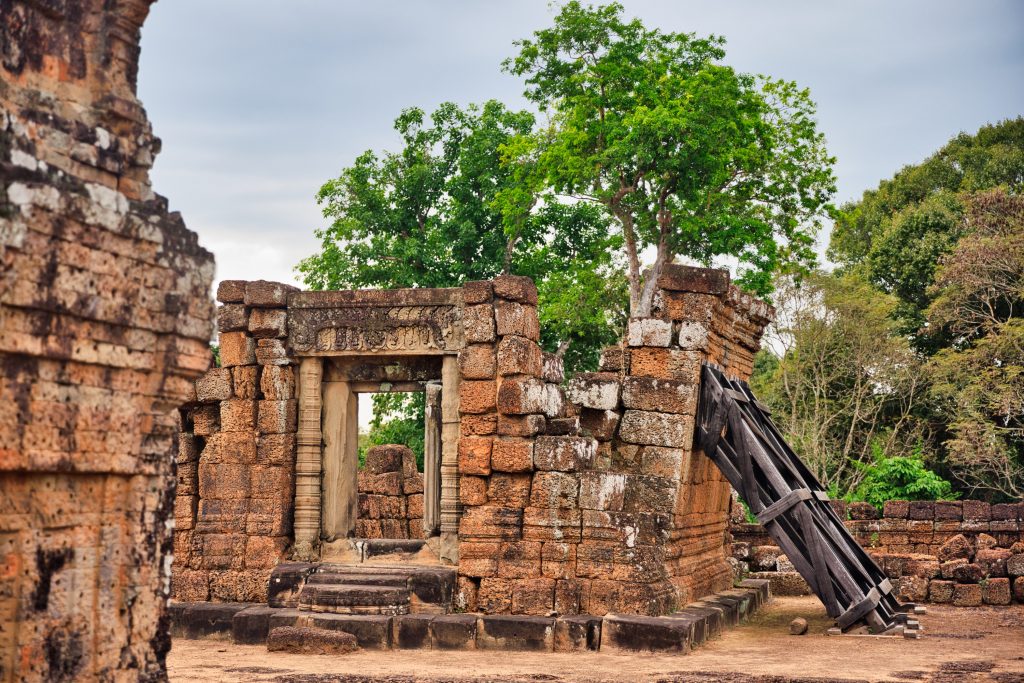


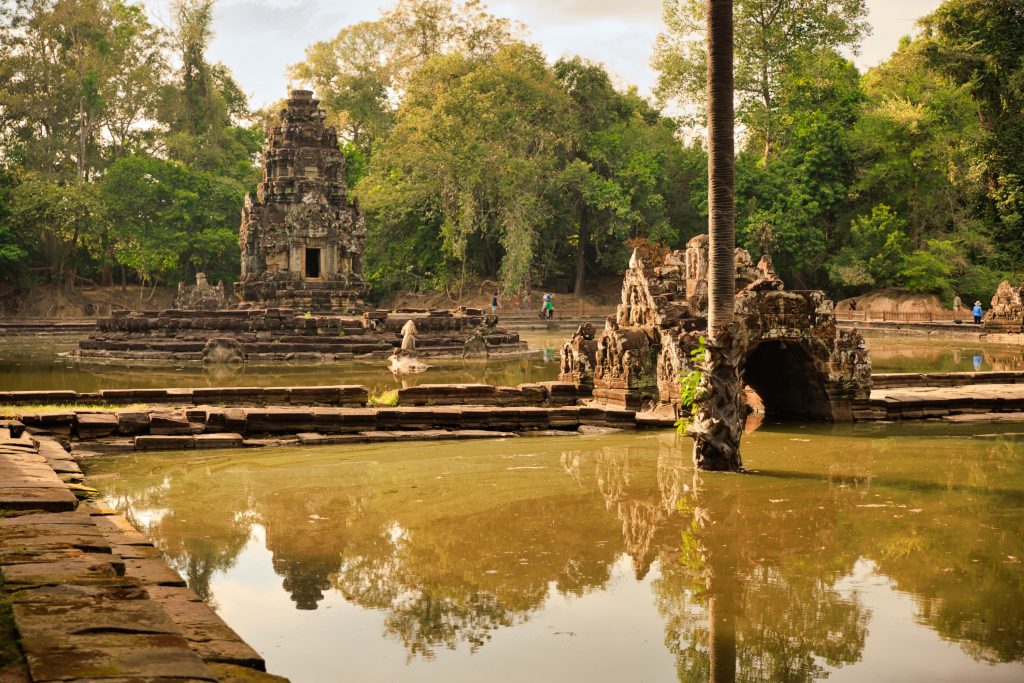


We had a few sprinkles while walking through but nothing major. Unfortunately no blue sky either. Just at the end of the day the sun started to peak out a little bit. That’s when Chris’ face lit up as well.
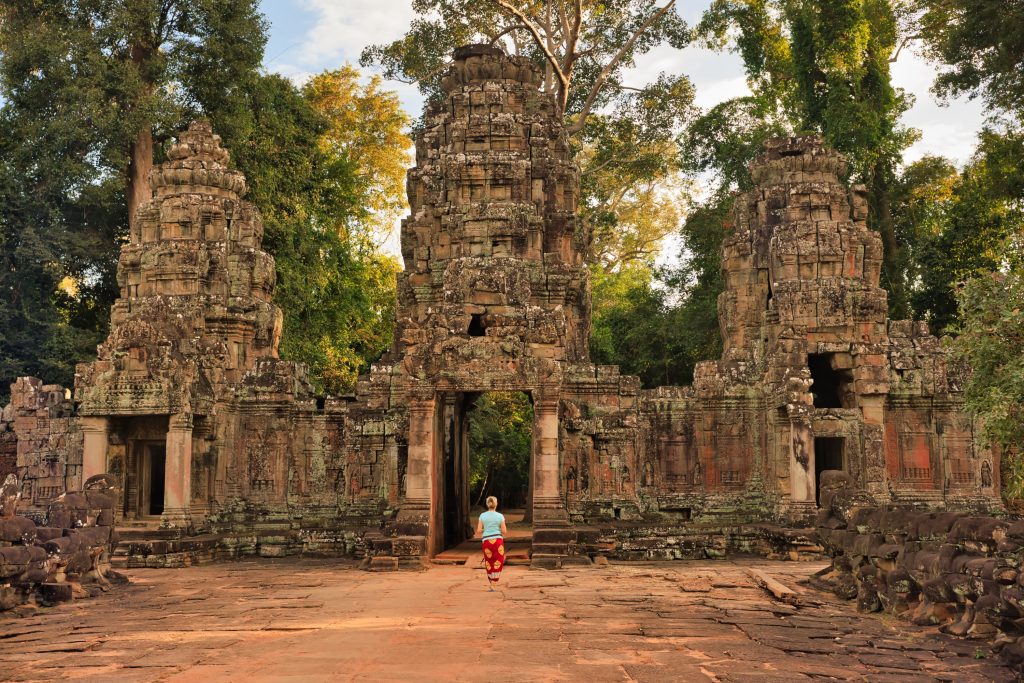


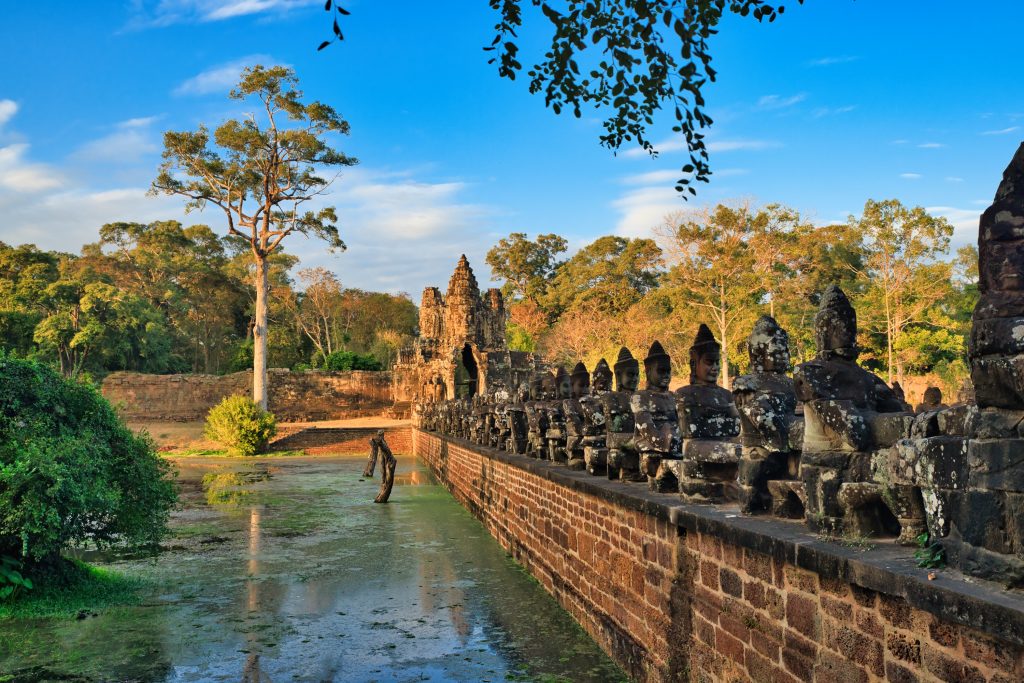
And so we made the temple of Bakheng our last stop as it is a well known sunset spot for visitors.

Walking up 15 minutes and then climbing the steep pyramid on top for another 5 minutes we arrived out of breath to see the last rays of the sun shining across the jungle forest.
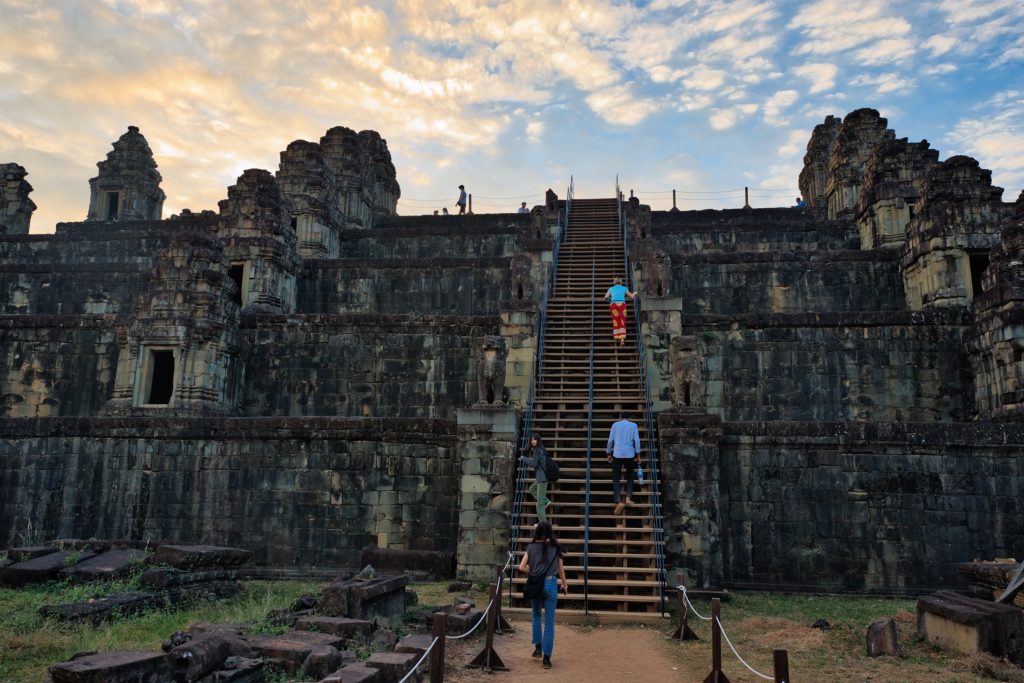
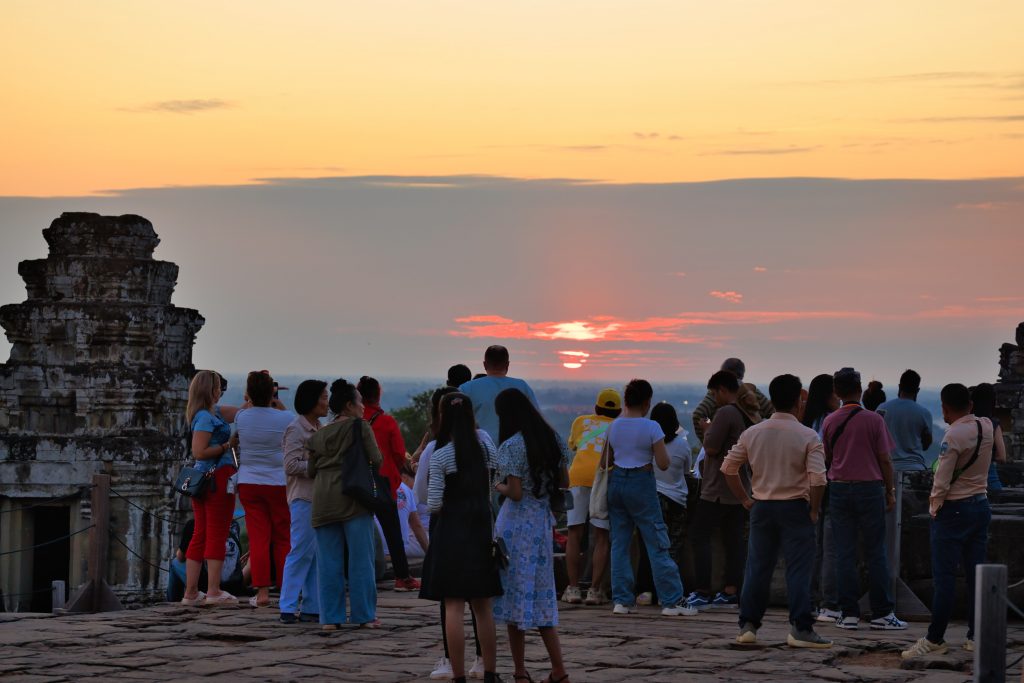

The view was spectacular even though the sky was mostly cloudy and no setting sun was shining on Angkor Wat, which could be seen in the distance.

What an impressive first day here in Cambodia. Repeat tomorrow. We were exhausted having walked and climbed so many steps in 29 degree heat and high humidity that we just had a light dinner and plopped to bed for deep sleep.


